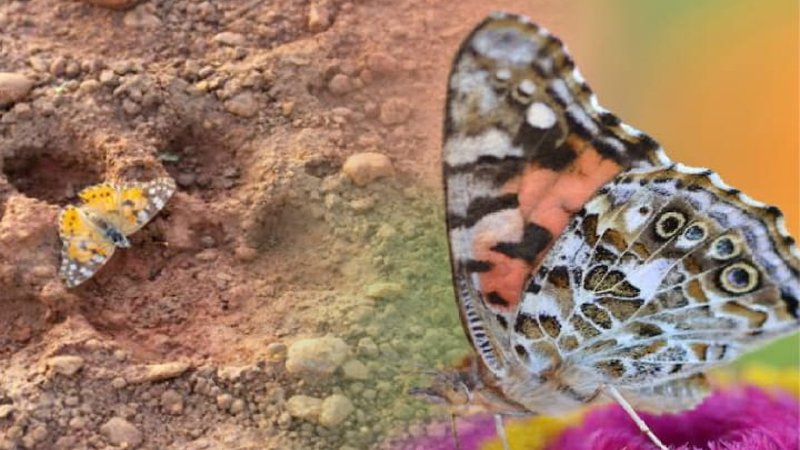Talavera and an international team of researchers conducted fieldwork in Sub-Saharan Africa during the months of December and January from late 2017 to early 2020.

Every year, painted lady butterflies born in Europe begin their epic journey south to Africa. Researchers now know where these long-distance travellers spend their winter vacation on the continent.
After flying across the Sahara in the fall, the orange-and-brown-winged insects set up camp and breed in savannas and highlands across central Africa from December to February, according to a study published April 10 in the Proceedings of the National Academy of Sciences.
The butterflies and their caterpillar offspring feast on a variety of plants as the rainy season brings greenery to the region, until their wintering spots dry up. The butterflies then migrate north to Europe.
The last unknown piece of the roughly 15,000-kilometer migration of painted lady butterflies (Vanessa cardui), says Gerard Talavera, an entomologist and evolutionary biologist at the Botanical Institute of Barcelona.
The species, which is one of the most common in the world, has the longest round-trip journey of any butterfly. Constant Stefanescu, a butterfly ecologist at Museu de Ciències Naturals de Granollers in Spain who was not involved in the study, says that painted ladies aren’t the only insects that make such long migrations.
Understanding how these butterflies migrate provides a framework for investigating how other migratory insects, including destructive pests, migrate.
Scientists knew the painted ladies travelled to Africa, but where on the continent they spent the European winters of December to February remained a mystery. In the fall, the butterflies cross the Sahara and arrive in countries such as Chad.
According to Talavera, the insects fly elsewhere around November, but it is unknown where they land. Talavera and colleagues predicted that subtropical regions near the equator might provide suitable habitat prior to this study. The researchers needed to find butterflies in the field to be certain.
Talavera and an international team of researchers conducted fieldwork in Sub-Saharan Africa during the months of December and January from late 2017 to early 2020. For about two years, another 15 sites were monitored year round. The team searched for adults and their children in nine countries, including Benin, Cameroon, and Kenya.
Talavera says it was a big bet that the team would even find the butterflies. Their preferred plants are well-known in Europe, making them relatively easy to locate.
But it was unclear which plants the insects would prefer in Africa. Aside from previous research pointing to the subtropics and the fact that insects prefer open spaces to forests, the team was going in blind. “My main concern was not being able to locate the species,” Talavera says.
That worry was unwarranted. The researchers found more than 2,700 caterpillars and nearly 2,000 adult butterflies, from as far west as Cote d’Ivoire and all the way east to Kenya and Ethiopia.
The butterflies live in semiarid savannas from September to November. From December to February, the painted ladies migrate south to savannas and highlands in slightly humid regions as those areas dry up.
According to Talavera, the tropical rainforests of Central Africa prevent the butterflies from migrating any further south. “These butterflies dislike wet environments.” Field observations indicate that a great deal of breeding may occur in these slightly humid savannas and highlands.
Warm weather across the region may help the butterflies reproduce faster than they do in some parts of Europe, according to Talavera, implying that three to five generations may be born in Sub-Saharan Africa before any surviving adults migrate north in February.
According to Stefanescu, knowing where painted lady butterflies breed could help researchers understand why there are occasional population booms with 100 times as many butterflies in some years as others.
In 2021, he and colleagues linked the phenomenon to rains in Sub-Saharan Africa, possibly providing more plants for butterflies to stop and lay eggs on. However, the area of West Africa identified in that study differs from the newly discovered breeding grounds, according to Stefanescu.
Scientists can now confirm the link by examining rainfall and other environmental factors in areas where baby butterflies are found growing up. The next mystery Talavera’s group hopes to solve is why painted lady butterflies travel such a long distance in the first place.